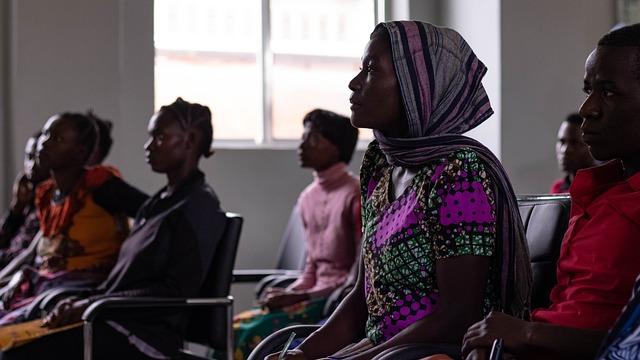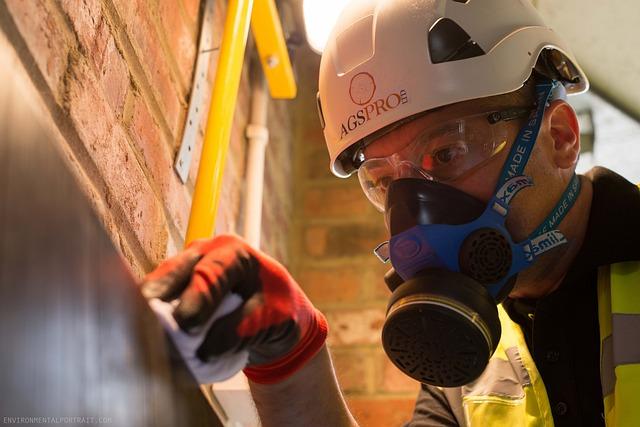In a tragic incident that has sparked national concern, a building collapse in Tanzania has claimed the lives of at least 13 individuals, as reported by Reuters. The disaster, which occurred in the bustling city of Dar es Salaam, has raised urgent questions regarding building safety standards and regulatory enforcement in the region. Eyewitness accounts describe chaotic scenes as rescue teams worked tirelessly to search for survivors amidst the rubble. The government has initiated an investigation into the causes of the collapse, while local communities mourn the loss of life and grapple with the implications of such a catastrophic event. This article delves into the details surrounding the tragedy, explores the aftermath, and examines the broader issues of construction safety in Tanzania.
Tragic Loss of Life in Tanzania Building Collapse

A devastating incident occurred in Tanzania as a building collapse claimed the lives of at least 13 individuals, igniting widespread grief and shock throughout the nation. The structure, which was reportedly under construction in the bustling city of Dar es Salaam, suddenly collapsed, trapping workers and passersby beneath the rubble. Eyewitness accounts reveal the chaos that ensued, with frantic efforts by local authorities and rescue teams to search for survivors. Local hospitals are bracing for a potential influx of injured, as emergency responders continue to dig through the debris in hopes of finding anyone still alive.
Authorities are launching an investigation into the cause of the collapse,focusing on concerns regarding building regulations and oversight in the rapidly urbanizing area. This tragic event highlights ongoing challenges in construction safety,as many buildings in Tanzania face scrutiny for adherence to structural integrity standards.As the community mourns,they are also calling for stronger enforcement of construction codes to prevent such tragedies in the future. In a country where the rapid urban development lacks sufficient oversight, the questions surrounding accountability remain ever more pressing.
- Location: Dar es Salaam
- Casualties: At least 13 confirmed dead
- Rescue Efforts: Ongoing, with hopes of finding survivors
- Investigation Focus: building regulations and safety standards
Investigation Underway into Structural Safety Violations

The tragic collapse of a multi-story building in Tanzania has prompted authorities to launch a thorough investigation into potential structural safety violations.Eyewitness accounts and preliminary assessments indicate that the building was either hastily constructed or failed to adhere to local building regulations. Concerns have been raised about whether adequate safety inspections were conducted prior to the building’s completion,leading to heightened scrutiny of the construction industry in the region. Local officials are especially focused on the role of contractors and engineers in ensuring compliance with safety protocols.
As part of the investigation,the following key areas are under review:
- Building permits and documentation: Scrutiny of legal paperwork to confirm whether proper permits were obtained.
- Previous complaints: Examination of any prior reports or complaints related to the building’s safety.
- Materials used: An analysis of construction materials for compliance with safety standards.
- Inspection reports: Review of past inspection findings and whether they were compromised.
| Date | Incident | Action Taken |
|---|---|---|
| Oct 2023 | Building collapse | Investigation launched |
| 2022 | Citations issued for other structures | Increased inspections |
| Ongoing | community workshops | Raising awareness of building standards |
Community Response and Support for victims’ Families

In the wake of the tragic building collapse that claimed at least 13 lives,the local community has swiftly mobilized to offer support and aid to the families affected by this devastating incident. Individuals,organizations,and businesses have come together to provide immediate assistance,showcasing the resilience and compassion of the community. Efforts include:
- Fundraising initiatives through social media and local events aimed at collecting donations for medical care and funeral expenses.
- Volunteer support from community members, ranging from food distribution to counseling services for grieving families.
- Collaboration with local NGOs to ensure that emotional and psychological support is readily available for survivors and relatives.
Furthermore, a local memorial service is planned to honour those who lost their lives, emphasizing the strong community bond in times of hardship. This gathering will serve as a platform to not only remember the victims but also to discuss ways to prevent such tragedies in the future. A table listing the upcoming events and resources is being circulated among residents, encouraging widespread participation:
| Date | Event | Location |
|---|---|---|
| November 5 | Memorial Service | Community Hall |
| November 10 | Fundraising Dinner | Local Restaurant |
| November 15 | Support Group Meeting | Library Meeting room |
Lessons Learned: Addressing building Regulations and Enforcement

The recent tragedy in Tanzania underscores the critical need for stringent building regulations and effective enforcement mechanisms. Many of the country’s construction sites operate in a gray area of oversight, where adherence to safety standards is often overlooked.To prevent similar disasters, it is essential that authorities implement the following measures:
- Thorough Training: Ensure that construction personnel are trained on safety regulations and best practices.
- Regular Inspections: Establish a schedule for routine site inspections to catch potential hazards early.
- Public Awareness Campaigns: Educate the community about building codes and their importance in ensuring safety.
furthermore, collaboration between government agencies, local contractors, and international partners can enhance the capacity to uphold construction standards.By establishing clear accountability structures, those responsible for violations can be more easily identified and penalized. Below is a comparison of proposed improvements versus existing conditions:
| Aspect | Current Condition | Proposed Improvement |
|---|---|---|
| Regulatory Framework | Lack of clear guidelines | Develop detailed and practical regulations |
| Enforcement | Inconsistent oversight | Establish dedicated enforcement teams |
| Community Involvement | Minimal public engagement | encourage community reporting on unsafe practices |
Recommendations for Future Urban Development and Safety Standards

In light of the recent tragic building collapse in Tanzania, it is indeed imperative for urban planners and local governments to establish stringent safety standards that prioritize human life. This includes the implementation of comprehensive architectural assessments before construction permits are issued. additionally, regular inspections should be mandated during the construction phase to ensure compliance with safety protocols and structural integrity. Key recommendations include:
- Developing a standardized framework for building codes that emphasize durability and resilience.
- investing in training programs for construction workers to promote awareness of safe building practices.
- Enhancing public awareness campaigns to educate citizens about reporting unsafe structures and the importance of adherence to safety regulations.
Moreover, collaboration between government agencies, civil society, and the private sector is crucial for fostering a culture of safety in urban environments. This collaboration could lead to the establishment of an urban safety task force that regularly reviews building projects and enforces adherence to safety measures. An effective approach may also involve:
- Utilizing modern technology such as drones for aerial inspections of large construction sites.
- Creating a obvious reporting system where citizens can provide feedback on construction project progress and safety.
- Integrating sustainability practices in urban design to not only improve safety but also enhance environmental resilience.
| Strategy | Impact |
|---|---|
| Stringent Building Codes | Reduces risk of structural failures |
| Worker Training Programs | Enhances on-site safety practices |
| Urban Safety Task Force | Improves regulatory compliance |
International Perspectives on Construction Safety in Developing Nations

The recent tragic incident in tanzania, where a building collapse resulted in the loss of at least 13 lives, underscores a growing concern about construction safety in developing nations. Thes countries frequently enough face meaningful challenges, including lack of regulation, inadequate training, and poor enforcement of safety standards. The incident serves as a reminder of the urgent need for improved safety protocols and a centralized system for monitoring construction practices. Local governments must prioritize the establishment of regulations that align with international safety norms to prevent such disasters in the future.
An examination of construction safety in similar regions highlights several key factors contributing to these alarming incidents. Among these are:
- Resource Constraints: Limited financial and technical resources hinder the ability to implement safe building practices.
- Cultural Attitudes: A lack of awareness and understanding of safety measures among both laborers and employers can lead to negligence.
- Corruption: Bribery and corruption in the permitting process often lead to substandard construction and enforcement.
Addressing these issues not only requires local commitment but also international collaboration and support. Strengthening global partnerships can facilitate knowledge sharing and empower communities with the skills necessary to ensure safer construction practices.
Wrapping Up
In the wake of this tragic incident, the spotlight remains on the urgent need for improved building regulations and enforcement in Tanzania. The loss of at least 13 lives highlights not only the human toll of such structural failures but also raises significant concerns regarding safety standards and construction practices in the region. As investigations continue and efforts to rescue any remaining trapped individuals are underway,the community grapples with the devastating impact of this collapse. Policy makers, engineers, and stakeholders must come together to ensure that such a disaster is prevented in the future, prioritizing the safety and wellbeing of citizens. As the nation mourns, it also faces a critical juncture‚ÄĒone that requires a commitment to addressing systemic issues that perpetuate risks in urban development.







